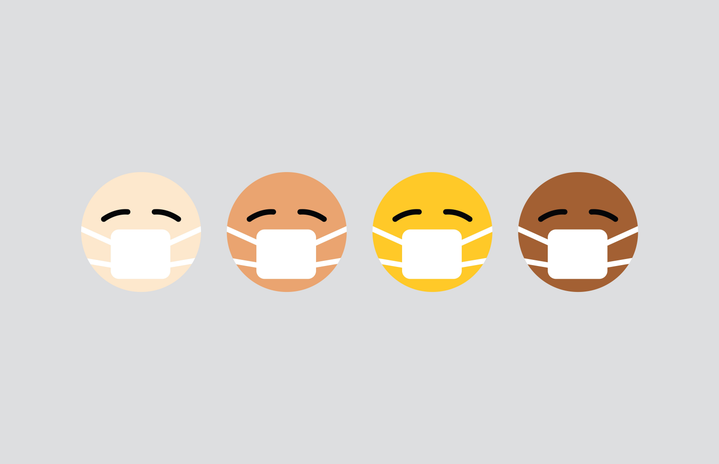The COVID-19 pandemic has caused a time full of uncertainty and fear. People are afraid and confined to their homes with no time frame as to when they can resume their lives that COVID-19 so rapidly halted. For Americans, the lack of many necessary supplies including medical supplies and everyday products has caused the rise of panic. All of these negative emotions bottle up and have to be released in some way. Unfortunately, for many Asian Americans, these negative emotions have been directed at them in the form of hatred and bigotry. This rise in hatred and xenophobia can be explained, but not condoned, due to the Social Identity Theory, the Stereotype Content Model, and identity frameworks.
Social Identity Theory was created by Henri Tajfel after a series of experiments, where he separated participants into two groups based on randomized factors and gave them an “unrelated” task of allocating money to each other. He discovered that the participants would give more money to members of their “in-group” even if that meant their group received less money in total, he called this the Minimal Group Paradigm. Based off of the Minimal Group Paradigm, Tajfel defined social identity as “an individual’s knowledge that they belong to certain social groups together with some emotional and value significance to them of their group membership.” Social Identity Theory is a process that includes three steps: (1) social categorization, (2) social identification, and (3) social comparison. Social categorization refers to the way that one prototypes other people based on characteristics such as gender, age, ethnicity or religion. In the context of COVID-19, many people are categorizing Asian Americans solely on the fact that they appear to be of Asian descent with no regard to their other identifying characteristics. Social identification refers to the motivations that someone may have to identify with a group including internalization, self-esteem, uncertainty, and distinctiveness. This means that someone that isn’t Asian American may identify with other groups because it improves their self-esteem that they are not part of the group that they consider to be spreading COVID-19. This step of social identity theory helps create the concept of in-groups and out-groups. In this case, the in-group would be non-Asian Americans and the out-group would be Asian Americans. These groups have been perpetuated not only by the U.S. media but also by the President. In a tweet, President Trump stated, “It is very important that we totally protect our Asian American community in the United States, and all around the world. They are amazing people, and the spreading of the Virus is NOT their fault in any way, shape, or form. They are working closely with us to get rid of it. WE WILL PREVAIL TOGETHER!” While Trump’s message was meant to discourage the acts of hatred towards Asian Americans, he instead separated Asian Americans as ‘them’ and the rest of America into ‘us’, further enforcing the in-group and out-group rather than including Asian Americans in the in-group.
There are multiple approaches to thinking about identity including the difference framework, additive framework, diversity framework, and the matrix of domination. I believe that the Americans who are committing the discriminatory acts solely think about identity through the difference framework, without realizing they are doing that. The difference framework identifies unique group attitudes and experiences and treats these identities as separate, therefore this framework is limiting and doesn’t seem to consider intersectionalities. This means that the people promoting hatred are only considering the fact that Asian Americans are of Asian descent and come from Asian countries, and are not considering anything else about their identities such as their career, wealth or age. Therefore a non-Asian American could be hateful towards an Asian American and accuse them of spreading the disease when this particular person could also be a medical professional that has been working tirelessly to care for those that are infected with COVID-19.
This surge in xenophobia could also be explained by the Stereotype Content Model. The Stereotype Content Model is a model for thinking about group perceptions. It explains how we create group stereotypes. Based on this model, group stereotypes are based on the answer to two questions: (1) ‘What are their intentions?’ and (2) ‘Can they act on those intentions?’. The answers to these questions are then used to determine the group’s status and warmth in society, and the group’s threat of competition or their competence. The group’s warmth and competence is then graphed to determine the perception of that group. During this time, Asian Americans are regarded with a low level of warmth and a low level of competency. This means that the group is perceived with contempt and disgust, as most out-groups often are.
Ethnocentrism is another reason why Asian Americans are facing harassment during this time. When COVID-19 was beginning to spread to places outside of China there were rumors that the virus started due to someone eating bat soup. The idea that someone could eat bat soup was regarded with great disgust among many Americans. Whether or not bat soup was the source of the virus is ultimately irrelevant. However, many Asian Americans faced criticisms for the food that their cultures may or may not eat due to ethnocentrism. Ethnocentrism is when one judges another culture based on the standards of their own culture. This is a common act in the United States as many people will judge the way other cultures act including what they eat or wear, how they parent, their religious acts, and countless other things. Another example of ethnocentrism in the United States during this time is the attack on Asian Americans that chose to wear face masks long before it was required by states. Rather than acknowledging that many Asian Americans and Asian countries do this to protect their own immune systems from germs or pollution, typically in large cities, they were attacked and assumed to have the virus and that they were spreading it around because wearing a facial mask is not part of the typical ‘American’ culture.
I believe that as a society we can address this issue by promoting better cultural awareness. I believe that a start to correcting this problem is by implementing ways to teach cultural relativism to the American population. Cultural relativism is when one judges another culture based on that culture’s own standards. I believe this could significantly improve how Americans view and interact with other cultures. I also believe that it is important to create a better understanding of how identities interact. For example, an Asian American obviously has more to their identity than just their ethnicity, their identity could include their job, gender, age, education and numerous other things. I believe that putting an emphasis on the fact that all of these identities interact with each other and with the rest of the population in many ways would help people comprehend the differences from person to person. Another way to solve this issue immediately is to correct the way that the virus is portrayed in the media. The fact that the President referred to the virus as the ‘Chinese virus’ instead of COVID-19 did a lot of damage and support people’s racist behaviors. Another example was when a newspaper published an article on COVID-19 and used a photo of a man of Asian descent standing in the street when the patient with a confirmed case of COVID-19 was not of Asian descent. Therefore with a better and more culturally competent educational system and unbiased media outlets, I believe we could limit and ultimately be rid of the discrimination against Asian Americans during this time.



